How to Create a Forest Garden? 3 Forest Garden Design Ideas
Do you like the magical atmosphere of forests, and you want to transfer it to your garden? It's possible, if you decide to create a forest garden. It's a popular trend which can be observed in many houses. Are you just at the beginning of your gardening adventure and have no idea how to design a forest garden, what plants to pick and what to pay attention to? As it turns out, a backyard forest garden is not as difficult to design as it seems. Take a look at the proven inspirations.
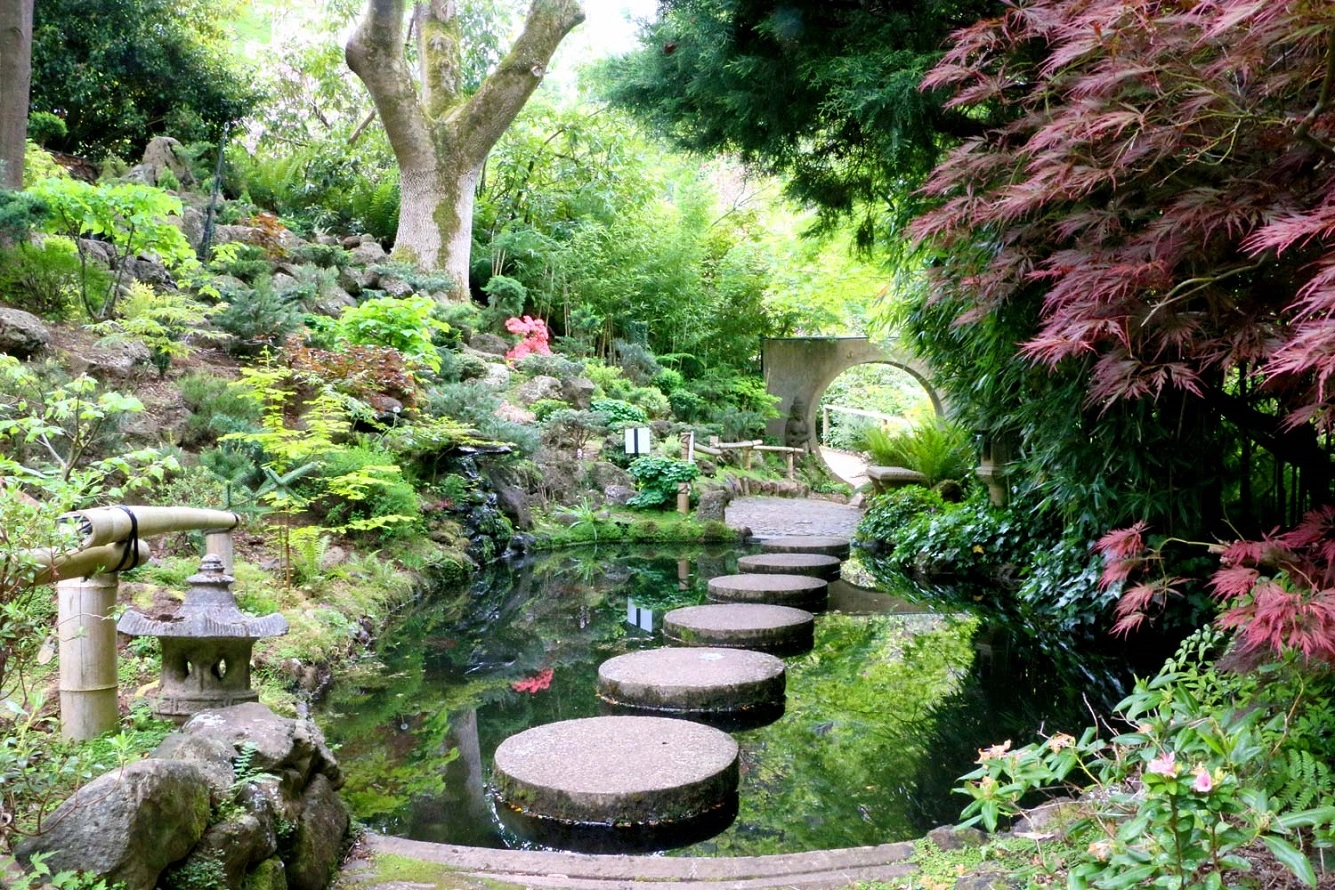
What is a forest garden, and what are its features?
A forest garden is simply a yard designed so that it resembles spaces known from walking in the woods. The name indicates it. Such an environment promotes rest, and the greenery surrounding the house is relaxing and soothing. By planting species known from forests, you can also achieve an interesting scent floating among the paths.
There are as many forest garden ideas as people. You can divide a section in your garden, where you can create a forest corner. But many property owners decide to design an entire garden in this style.
What’s more, you can create a forest garden using various plants – not necessarily typical species growing in the natural environment. But a garden that closely resembles woods is a commonly picked option. Regardless. it’s more difficult to design. Such arrangements are truly unique, though.
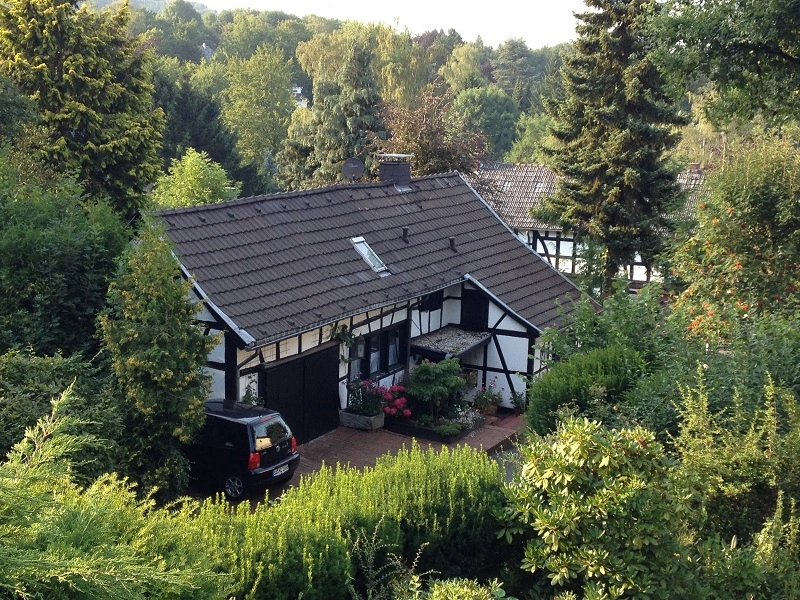
Can you design a forest garden by yourself?
Starting a forest garden using your own design is possible, but it’s a demanding process. Knowledge about plant species and their needs is crucial. If you want to create a typical forest garden, recreating natural layers of forest plants is important. It can take some time and requires careful preparation.
The process of creating a forest garden can be an amazing adventure. It’s a much less expensive solution than hiring professionals. Of course, if you encounter any issues, you can ask them for help.
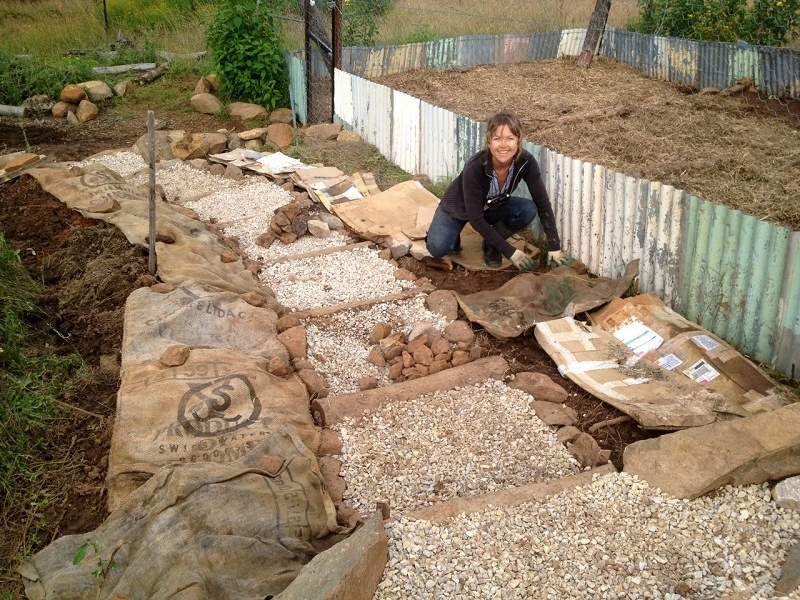
How to create a forest garden?
A good project is an essential step of starting a forest garden. At this stage, you have to decide whether you want to design the entire garden in such a style, or just a part of it. You can plan the appearance of your garden, or use the help of a specialist. The latter option is definitely much easier, quicker, and better, if you have no prior experience with plants.
If you have a plan – what’s next? It’s essential to prepare the terrain. Dig through the ground, fertilize it and remove unnecessary weeds. Begin planting trees and shrubs at the edges of the garden. Here’s the typical order:
- trees,
- shrubs,
- ornamental grasses,
- flowers.
Starting a lawn and adding optional architecture elements is the last step of designing a forest garden. You can decide on a wooden bench hidden in the shadow of trees, where you can rest during hot days. Many people pick an arbor, where they can grill or just spend time when it’s raining.
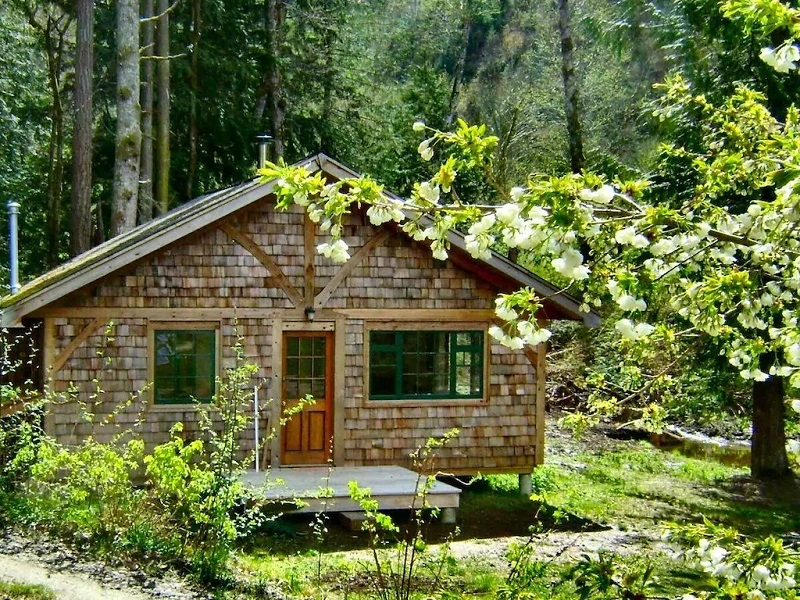
Forest garden – what plants to pick?
Plants, shrubs, and trees in a forest garden cannot be randomly picked. They must be species that love partial and full shade. Otherwise, it might turn out that nothing grows the way you expected.
The soil is another important aspect. Make sure to check what conditions you can offer to the plants. Most forest garden species need loose and slightly acidic soil. But make sure to check the plants you pick.
Coniferous trees and shrubs are essential
Coniferous trees and shrubs are the obvious choice for a forest garden, as they bring woods to mind the most. Are you wondering which species to pick? Small shrubs are perfect if you want to design a forest garden in a small yard:
- dwarf black pine (Pinus nigra),
- Bosnian pine (Pinus leucodermis),
- white pine (Pinus strobus),
- dwarf mountain pine (Pinus mugo),
- yew (Taxus),
- Norway sprune (Picea abies),
- Japanese larch (Larix kaempferi).
If your garden is large enough, you can also decide on larger coniferous trees to create a stunning forest garden. The following species might be suitable:
- Korean fir (Abies koreana),
- Chinese juniper (Juniperus chinensis),
- European larch (Larix decidua).
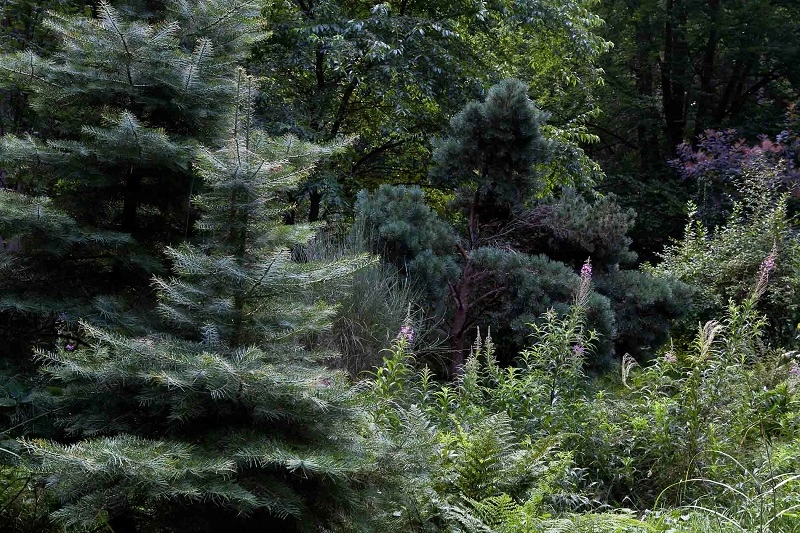
Leafy trees and shrubs for a forest garden
A forest garden cannot function without leafy trees and shrubs. You have many options in this case, so everything depends on what you like. The following species are among the most popular ones:
- willow,
- birch,
- maple.
Make sure to add some ornamental shrubs that will make the lower sections of the garden denser, and cast shade to the soil. The most popular species include:
- heather (Calluna),
- Hydrangea,
- mock orange (Philadelphus L.),
- barberry (Berberis L.),
- holly (Ilex L.),
- dogwood (Cornus L.),
- viburnum.
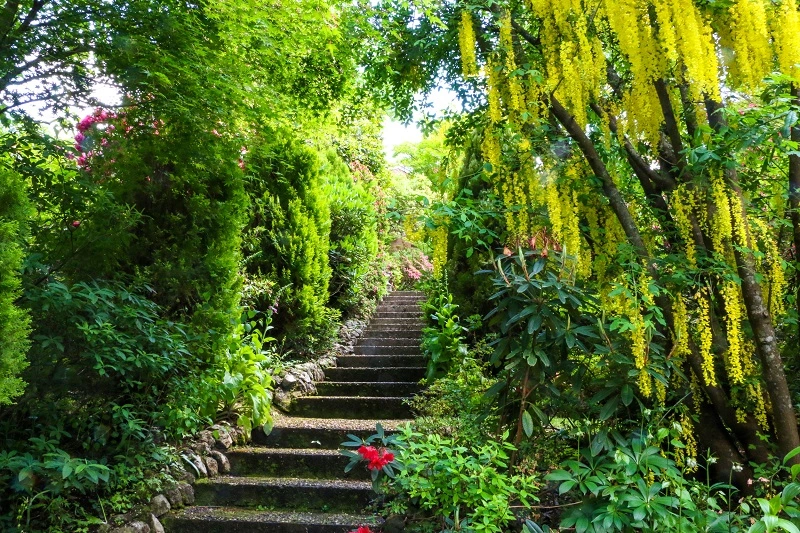
Ornamental grasses for a forest garden
Do you want to make your forest garden more attractive? You can plant various ornamental grasses in it. By deciding on several species, you can make sure they are of different heights, span, and even colors. Although pampas grass is the most popular decorative grass, we recommend other species in this case. Consider the following:
- Chinese silver grass (Miscanthus sinensis),
- Hakone grass (Hakonechloa macra),
- Spiky fescue (Festuca scoparia),
- Buchanan’s sedge (Carex buchananii).
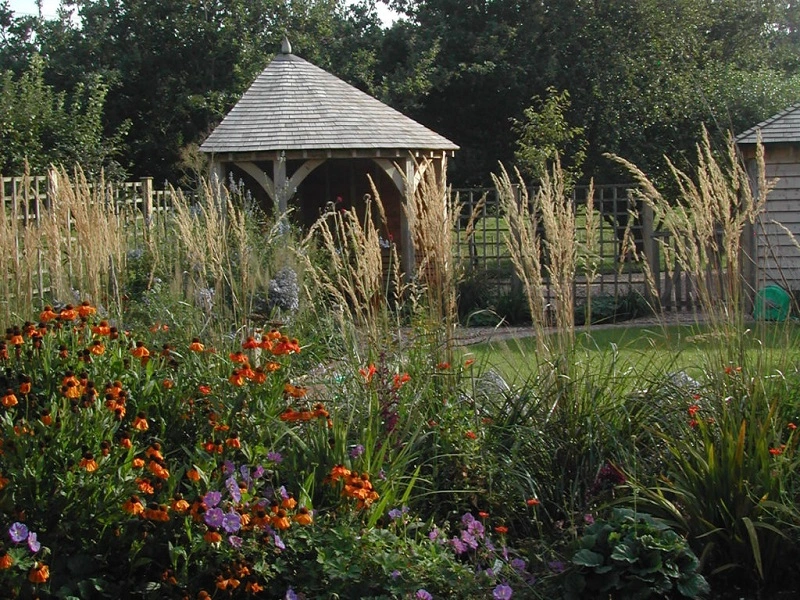
Perennials for a forest garden
Forest garden is not only shrubs and trees. You can add some perennials to enliven the space and bring some color. Of course, not all flowers from this group fit such a garden design, so you should think well about which plants to pick. Experts suggest plants such as:
- lavender (Lavandula),
- sage (Salvia),
- common ivy (Hedera helix),
- plantain lily (Hosta),
- lily of the valley (Convallaria majalis),
- goat’s beard (Aruncus dioicus).

A small forest garden – a hint of a real forest by your house
Is your property not the largest, but you still want to design a forest garden in it? You don’t have to give up this idea. Just pick a minimalist version of the project. A small area is definitely not enough to plant large trees and bushes in it. It would be an impractical waste of the precious space. Instead, pick a single larger tree and a shrub, and plant dwarf varieties between them.
The lower plants layer can consist, for instance, of ornamental grasses, with a wooden bench between them, where you can relax. You can also create narrow paths using small stones and bark. Plant heathers around them. Thanks to them, you introduce forest’s atmosphere in your garden landscape design.
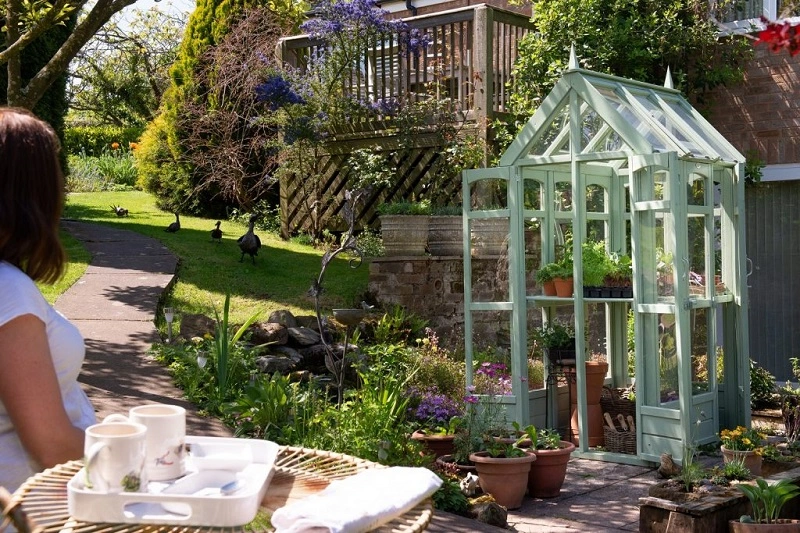
Forest garden design on a large property
If your home garden is large, you have many possibilities about its design. It doesn’t mean, though, that it’s easier. A lot of space means much more thinking about what your forest garden is supposed to look like. For this reason, many owners of large gardens decide to hire professionals to help them.
What elements can you add to such a large space? Consider these:
- tree alleys,
- miniature meadows,
- flowerbeds surrounded by large stones,
- an artificial river or lake,
- pergolas located above paths.
A forest garden on a large property allows you for more trees, shrubs, and plants. Thanks to this, it’s much more diverse.
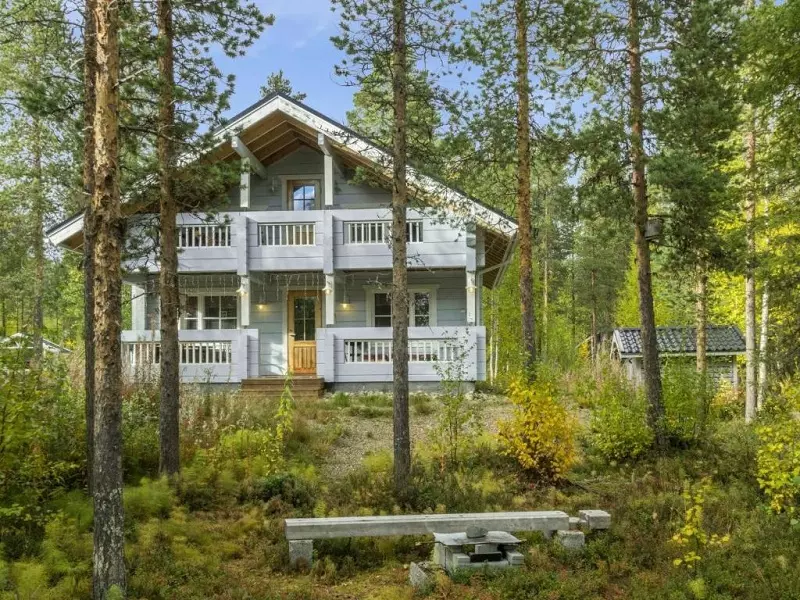
Forest garden – a modern landscape design
Many people associate a forest garden with neglected and overgrown yards. But the reality is different, and modern concepts of such designs prove it – they are well-thought-out and carefully planned.
Such a forest garden envisions trees and shrubs that are spread evenly. The space is divided by elegant paths and contains wooden garden architecture.
You can design a relaxation zone with a pond in such a modern garden, and if the space allows it – a small lake with a bridge. Nothing beats resting by the water.
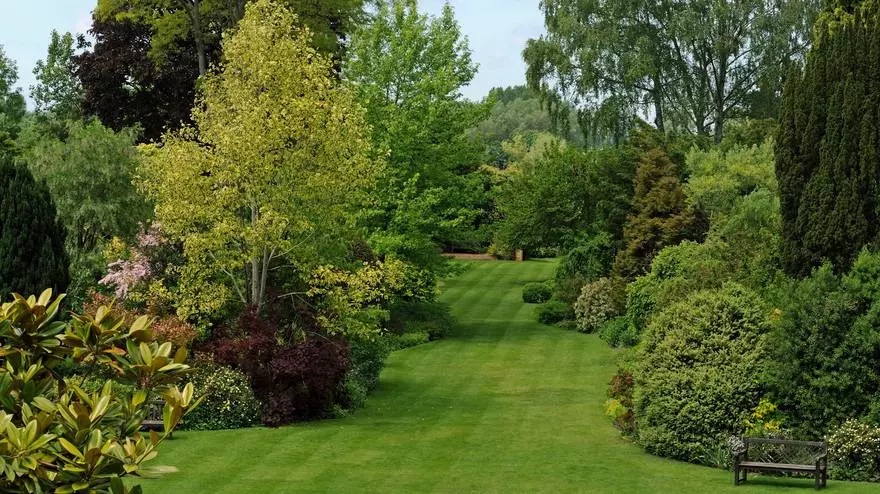
📍 How to design a forest garden?
Creating a forest garden is not difficult, although basic knowledge about the topic is useful. A pre-planned project is essential. If you manage to design it, you need to prepare the soil. Planting trees, shrubs and other plants is the last step.
📍 How to arrange a forest garden?
Picking the right plants is essential for a forest garden project. If the yard is quite large, you shouldn't have any major issues with it, as you can plant large trees, shrubs, ornamental grasses and perennials in it. You can also use garden structures such as benches, arbors, and pergolas. Huge properties are perfect for water reservoirs.
📍 What are the best forest garden plants?
Plants for a forest garden cannot be chosen randomly. But it depends mostly on how big of a space you have. Trees such as maples, birches and willows, plus shrubs – dogwood and viburnum are perfect. You can also use pampas grasses and perennial plants.
📍 Is a forest garden a good idea?
A forest garden gives you many possibilities. Such a design definitely looks impressive. What's more, it's a space where you can easily rest, especially during hot days – because of the pleasant shade.
Featured articles




